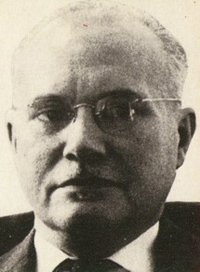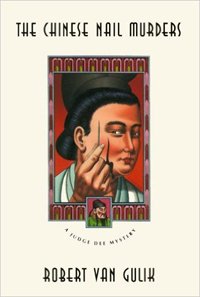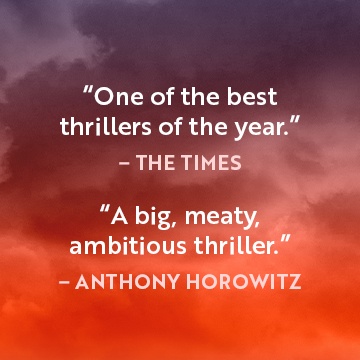
 The story of how Dutch diplomat Robert van Gulik came to write the 16 murder mysteries featuring legendary Tang Dynasty jurist Dee Jen-djieh – AKA Judge Dee – is almost as fascinating as the novels themselves. Van Gulik (1910-1967) took an early academic interest in Asian languages and literature, entering the Dutch foreign service in 1935. After World War II, he was posted to Japan for a four-year tour and, while other diplomats were engaged in studying Chinese post-imperial politics, the Communist Revolution, agriculture, engineering, and whatnot, van Gulik studied the relatively untouched arena of ancient popular culture, including its literature.
The story of how Dutch diplomat Robert van Gulik came to write the 16 murder mysteries featuring legendary Tang Dynasty jurist Dee Jen-djieh – AKA Judge Dee – is almost as fascinating as the novels themselves. Van Gulik (1910-1967) took an early academic interest in Asian languages and literature, entering the Dutch foreign service in 1935. After World War II, he was posted to Japan for a four-year tour and, while other diplomats were engaged in studying Chinese post-imperial politics, the Communist Revolution, agriculture, engineering, and whatnot, van Gulik studied the relatively untouched arena of ancient popular culture, including its literature.
 He produced a translation of a Chinese detective story, the only one he’d found that was written as a mystery, in that it didn’t provide the solution until the end. The more typical Chinese detective stories – the few were written down, as this was a predominantly oral tradition – identified the malefactor at the outset. They also frequently included supernatural elements, which van Gulik avoided. The translated story featured Judge Dee (630-700 AD), a real-life character who was both a perfect example of the Imperial magistrate and a Confucian scholar, earning the sobriquet, The Sherlock Holmes of China.
He produced a translation of a Chinese detective story, the only one he’d found that was written as a mystery, in that it didn’t provide the solution until the end. The more typical Chinese detective stories – the few were written down, as this was a predominantly oral tradition – identified the malefactor at the outset. They also frequently included supernatural elements, which van Gulik avoided. The translated story featured Judge Dee (630-700 AD), a real-life character who was both a perfect example of the Imperial magistrate and a Confucian scholar, earning the sobriquet, The Sherlock Holmes of China.
This initial book, Celebrated Cases of Judge Dee, became so popular among Western audiences that in the 1950s van Gulik was moved to call upon his deep cultural knowledge and insights to create his own original stories involving Judge Dee. In the meantime, he’d also made something of a study of Chinese erotic literature and art, and his novels frequently incorporate infidelity, illicit encounters, and prostitution. This indicated that traditional Chinese scholar-gentlemen were subject to the same moral weaknesses as people everywhere else and in every era. Ultimately, van Gulik became the Netherlands’ ambassador to Japan and ceased producing these wonderful mysteries.
 Each novel generally includes three plots, often intertwined, appropriate to Dee’s rising status within the judicial hierarchy. He skillfully illustrated his books using a simple pen-and-ink style that echoes 16th century Chinese block prints, and he provided charming and helpful hand-drawn maps of the town in which the novel takes place. Shown is the fictional Pei-chow from The Chinese Nail Murders. The books probably should be considered cosy mysteries, despite the murder and sex, and they are a delightful way to be transported to a faraway time and place and painlessly learn about daily life in ancient China.
Each novel generally includes three plots, often intertwined, appropriate to Dee’s rising status within the judicial hierarchy. He skillfully illustrated his books using a simple pen-and-ink style that echoes 16th century Chinese block prints, and he provided charming and helpful hand-drawn maps of the town in which the novel takes place. Shown is the fictional Pei-chow from The Chinese Nail Murders. The books probably should be considered cosy mysteries, despite the murder and sex, and they are a delightful way to be transported to a faraway time and place and painlessly learn about daily life in ancient China.
 As an example of the way the plots work, the three plots of The Willow Pattern, which takes place in the imperial capital after Judge Dee has become Lord Chief Justice, are The Case of the Willow Pattern, The Case of the Steep Staircase, and The Case of the Murdered Bondmaid. Judge Dee encounters all the bureaucratic mazes that the highly regulated imperial court, while plague and drought beset the city and popular uprisings threaten. He also must deal with a series of seemingly disconnected deaths that could spell the end for one of the city’s most aristocratic families.
As an example of the way the plots work, the three plots of The Willow Pattern, which takes place in the imperial capital after Judge Dee has become Lord Chief Justice, are The Case of the Willow Pattern, The Case of the Steep Staircase, and The Case of the Murdered Bondmaid. Judge Dee encounters all the bureaucratic mazes that the highly regulated imperial court, while plague and drought beset the city and popular uprisings threaten. He also must deal with a series of seemingly disconnected deaths that could spell the end for one of the city’s most aristocratic families.
Reading the books and van Gulik’s notes on Chinese traditions of criminal law has contemporary relevance. When Madame Mao Zedong was on trial as a member of the Gang of Four and was blamed for the devastation of the Cultural Revolution, she was roundly criticised in the Chinese media because she wouldn’t confess. Confession remains an essential feature of Chinese criminal law; in Judge Dee’s era, his assistants were allowed to torture the accused to obtain a confession. However, if they went too far and the accused suffered permanent bodily harm or died, the magistrate and his entire retinue would be treated to similar punishment. The legality of using torture to extract confessions in current Chinese law remains ambiguous.
According to an excellent introduction by Donald Lach to four of the early novels (University of Chicago editions, published in 1977), as recently as 40 years ago, Chinese archeologists uncovered a cache of 2200-year-old bamboo books from the Ch’in Dynasty that include tales of crime and detection. Accordingly, Lach says, “The search for the origins of the crime novel is being continued.”
The novels include some continuing characters, notably Dee’s lieutenants Ma Joong, Chiao Tai, and Tao Gan. Although there is no requirement to read the Judge Dee books in any particular sequence, because they skip around in Judge Dee’s fictional chronology, here they are in publication order:
The Chinese Maze Murders
Chinese Bell Murders
Chinese Lake Murders
Chinese Gold Murders
The Chinese Nail Murders
The Haunted Monastery
The Red Pavilion
The Lacquer Screen
The Emperor’s Pearl
The Monkey and The Tiger (The Morning of the Monkey and The Night of the Tiger)
The Willow Pattern
Murder in Canton
The Phantom of the Temple
Judge Dee at Work (short story collection)
Necklace and Calabash
Poets and Murder








